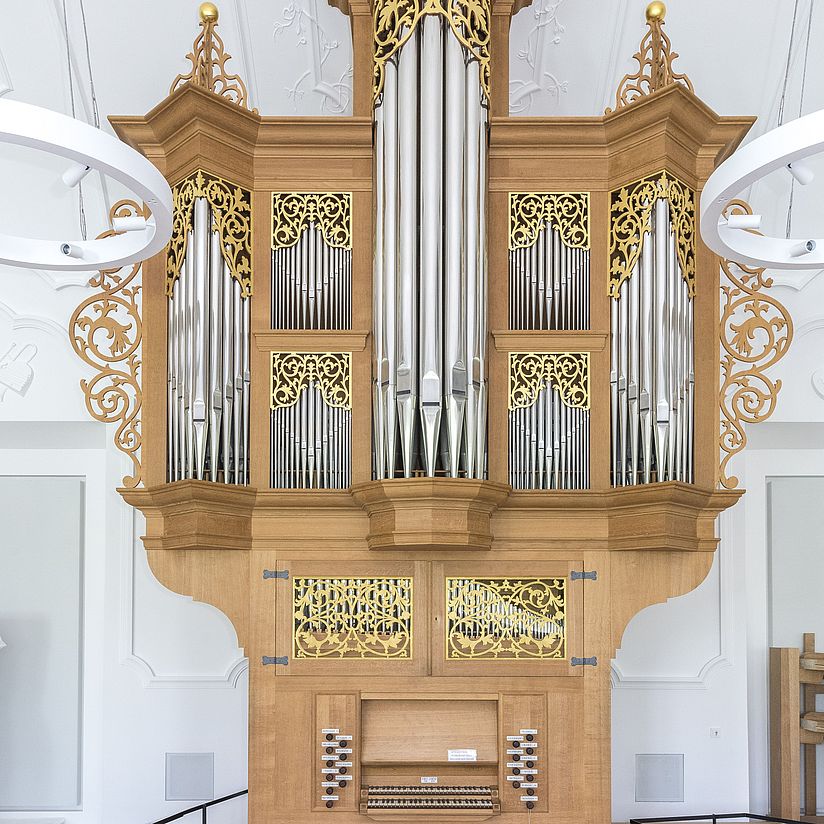
Photo: Deutsches Museum, München | Reinhard Krause Deutsches Museum
Musical Instruments
Sounds in the sign of the times
Beethoven’s symphonies without timpani and trumpets? Techno without a drum machine? Unimaginable! Musical instruments make our world sound. They are objects of art and at the same time technical devices and they are full of stories: about tones and sounds, about new materials, about inventions and scientific discoveries and about the people who build, play and listen to them. The exhibition sheds light on the development of instruments in the European musical tradition – from the one-offs of the 16th century to the mass-produced synthesizers of the present day. It simply sounds good!
From the Ahrend organ to the chirping automaton to the Moog IIIp: highlights from the collection’s approximately 2,000 instruments were selected for the exhibition and embedded in twelve thematic modules. The tour leads through three rooms in which important stages in the history of musical instruments from the Renaissance to the present are illuminated with the help of many original objects. Demonstrations allow visitors to become active themselves and explore, for example, how an organ works, the principle of electronic sound generation or acoustic phenomena. In some places, films bring to life the context in which instruments were used. And finally, a “View into the Depot” provides insights into the work behind the scenes.
“We are delighted that we can now show highlights of our unique collection in a modern setting,” says Silke Berdux, curator for Musical Instruments. “In addition to diverse themes and sounds from five centuries, there are many exciting and often surprising stories in these objects.” The curator is also particularly keen on the ‘View into the Depot’: “Here, visitors get a very realistic impression of the work behind the museum scenes. You don’t often get to experience that in this form!”
Listen!
What would a Musical Instruments exhibition be without sounds? To avoid distracting room sound, sound samples for about 40 selected instruments and the soundtracks of the films can be accessed via the digital museum guide or the free Deutsches Museum app.
Facts and figures:
Location: Level 1 (“View into the Depot” Level 0+)
Exhibition area: 730 sqm (+ view into the depot: 200 sqm)
Objects: approx. 250 (+ approx. 800 at “View into the Depot”)
Demonstrations: 12
Film stations: 8
Media stations: 4
Highlight: The Moog IIIp
The now legendary IIIp synthesizer was developed by Robert Moog (1934-2005) in 1968. Despite its size, the IIIp is portable – that is what the “p” stands for. The nearly 40 modules can be connected to each other at will via cables and allow countless sound combinations. This Moog IIIp is one of the first devices of this design and the first synthesizer of this type to come to Germany.
Download the Press Release
PM_Musical_Instruments.pdf (PDF 31 MB)
